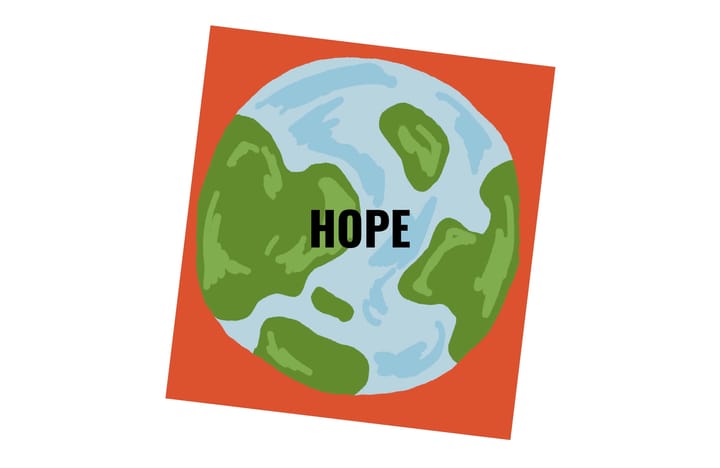Abortion Rights in the U.S.

By Luise M. and Frida K.
Under what conditions should abortion be allowed? Who should determine these conditions?
The heavily debated question splits society and is used repeatedly in election campaigns, where misinformation is spread and populism easily gets the better of crowds. At the heart of the debate lies the ethical question of how to weigh the woman’s right to bodily autonomy, a self determined life, and physical and mental health against the societal or governmental responsibility to protect and preserve the life of the fetus.
To understand the current situation, it is necessary to look at history, understand how patriarchy, misinformation and populist abuses of political power played a part in rights to abortion in the U.S.
In the early 19th century, abortion was unregulated in the U.S and until week 16-20, when fetal movement could be felt by the mother, abortions were nothing scandalous, uncommon, or illegal. This acceptance of abortion by society stems from the traditional Christian belief that personhood starts then (at quickening).
In 1847 the AMA American Medical Association formed an organization to reduce healthy risks and set rules in the medical world. Dominated overwhelmingly by men, and lacking any sort of reproductive health experiences, the members of the AMA still saw themselves with the right and responsibility to decide when an abortion should and could be (legally) carried out. The AMA launched an effective abortion criminalization campaign. The effects of the campaign became most evident in the early 1900s when nearly all state legislatures banned abortion unless strictly necessary to save the life of the mother.
Through much of the 20th Century, abortion was restricted in the United States. With the rise of Second Wave Feminism, legal challenges were posed to abortion restrictions. The most prominent case is Roe v. Wade (1973). Roe v. Wade was first appealed in Texas, and ended in the recognition of the constitutional right of a woman to choose an abortion without excessive government interference. The ruling allowed abortions up until viability (around 24 weeks) and established the framework for modern abortion law in the U.S.
However, this right was not absolute. The individual states could intervene starting in the second trimester of pregnancy except in cases where the mother's life or health was at risk. In 2022, the ruling was overturned and replaced by the second important ruling, Dobbs v. Jackson. In the final ruling, states were given the power to interpret the U.S. Constitution themselves and set up independent rules and regulations regarding abortion, that apply to that specific state and its inhabitants. This decision prompted a wave of abortion restrictions and outright bans across many conservative states, with every state having different laws and regulations and procedures.
The future of the Dobbs decision is on the line with the 2024 election. Donald Trump's position has varied over the past years with him vowing to overturn Roe v. Wade in October 2016. By appointing conservative justices Neil Gorsuch, Brett Kavanaugh and Amy Coney Barrett he fulfilled his promise stating that, "God made the decision." The Florida Supreme Court upheld a six-week state abortion ban, with Trump stating he would be voting, "that we need more than six weeks" before reversing course and saying he would support the ban. Trump's campaign has been shaped by a constant change of stances and misinformation with him stating, "He (Tim Walz) also says execution after birth, it's no longer abortion (...), it's execution, is okay." Of course, there is no U.S. state where it is legal to kill a baby after it is born. Statements such as these and policy switches have led to Kamala Harris arguing that women should not trust Trump. She, on the other hand, has consistently supported reproductive rights throughout her career, vowing to prevent Trump from imposing a national abortion plan. Harris has condemned the Supreme Court's decision to overturn Roe v. Wade and her campaign specified that she aims to restore it. Yet activists criticize Harris's position, arguing that Roe's protections harmed patients by allowing states to impose restrictions and ban abortions at later dates.
To understand abortion rights in the US it is helpful to compare it to take a comparative perspective. In Germany, abortion is legal up until the 12 week of pregnancy after mandatory counseling. After the deadline of 12 weeks, an abortion can only be permitted if the woman’s health, physical or mental, are at risk or if the pregnancy is a result from rape. However, other countries (such as Egypt, Saudi Arabia, Philippines) have total or near-total abortion bans.
The Ethical Dilemma: Pro-Life vs. Pro-Choice
The core of disagreements between Pro-Life and Pro-Choice is rooted in cultural, traditional or religious beliefs about life, when it starts, responsibility to protect the soon to be life and fighting for it while respecting every human's right to lead a self-determined life.
Pro-life advocates are generally against legalized abortion and argue that life begins at conception or soon after and that the fetus has a right to life that should be protected by law because it is unable to protect itself. They believe that society has an obligation to protect the most vulnerable, including unborn children. Pro-life supporters often promote increased support for pregnant women and alternatives to abortion, such as adoption.
Pro-choice advocates emphasize the importance of bodily autonomy and the right of women to make decisions about their own bodies. Stressing that a woman's life will be drastically changed by the pregnancy and birth of the child as well as the responsibility of raising a child, or the struggle to let a family adopt their child. Therefore if women don’t have the right to abort, their right to self determined living is infringed upon. They also argue that forcing a woman to carry an unwanted pregnancy to term violates her personal freedom and may lead to physical, emotional, and economic harm. Pro-choice proponents also point out that outlawing abortion does not prevent it but instead pushes women toward dangerous, unsafe, methods or unhygienic illegal abortions.
A recurring criticism of abortion regulations is also the disproportionate influence of men dominating positions of power, shaping laws that primarily affect women. Throughout U.S. and world history, patriarchy has played a problematic role. Though much has improved, the white cisgender male is still always ahead in our system. The Constitution was written by men, Congress is disproportionately male (81%), the Supreme Court has been male-dominated. The unfairness is especially bitter in the case of abortion because men are making decisions that specifically apply to women, without the same life experiences, and therefore the understanding or perspective to make just decisions.


